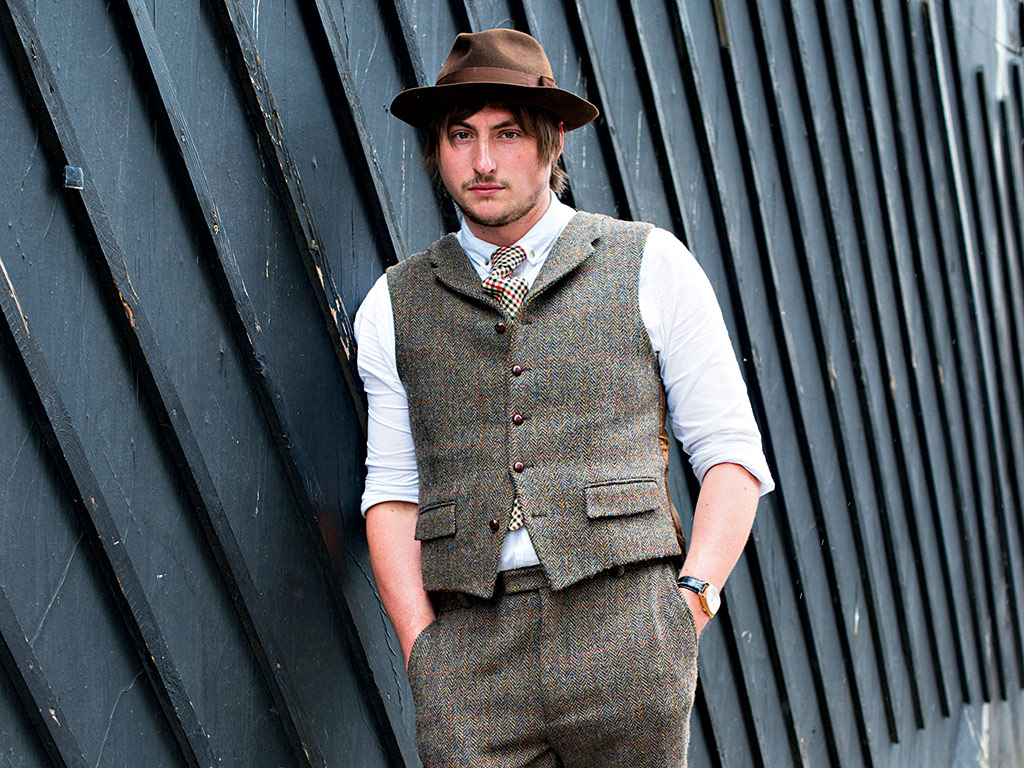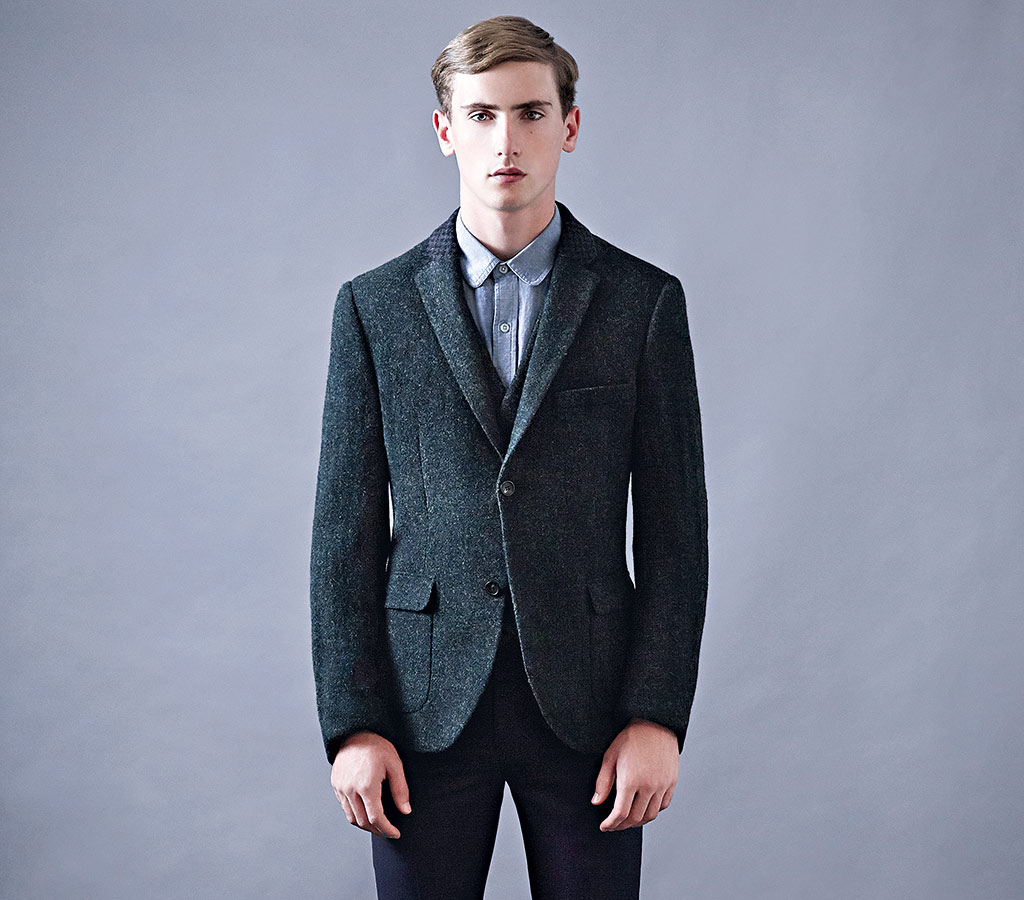
Until recently, Harris Tweed used to conjure up images of grandpa’s itchy jacket. Things have changed, and the traditional material is moving in more youthful circles; indeed, fashion heavyweights seem as smitten by the intricately woven material as their most discerning customers. Soon, the cloth will enjoy international exposure, since The Carloway Mill – the smallest of the three Harris Tweed mills – received backing from the major Chinese textile company Shandong Ruyi as part of a deal that concluded in March 2013.
“The joint venture is mutually beneficial,” says Bruce Armitage, Operations Director at The Carloway Mill. “Shandong Ruyi wanted to add a heritage brand to its portfolio, while we were interested in breaking into the Chinese market – now we can do so with the help from a local expert well-versed in Chinese business laws and other logistical aspects that might have been tricky for us to get to grips with.”
Youthful makeover

Major UK retailer Topman teamed up with Harris Tweed last year, and due to the success of the project a second instalment has been brought out for the Autumn/Winter 2013/14 collection. Topman is not the only fashion player to have joined forces with Harris Tweed recently, but it is perhaps the most obvious indication that the traditional cloth has reached a new, younger clientele. The Harris Tweed/Topman range consists of four blazers and as many matching waistcoats, all of which are available in different colours and created exclusively for Topman.
Investment deals between global giants and small, financially vulnerable heritage brands often result in watered-down concepts, but the Scottish cloth is not at risk of losing its distinctive DNA – or suffering commercial corruption in any way. “You’ll never see a tag saying ‘Harris Tweed made in China’, as moving production away from the Outer Hebrides – or indeed tampering with the Harris Tweed Act of 1993 at all – would be illegal,” says Armitage.
The material – which is the only fabric in the world produced in commercial quantities by exclusively traditional methods – can only be made in very specific ways as outlined in the Harris Tweed Act of Parliament. The mark of the Orb will only be applied to lengths of cloth that meet a certain quality and have been dyed, spun and hand-woven by self-employed islanders of the Outer Hebrides of Scotland.
Step by step
The potential growth of The Carloway Mill and the Harris Tweed industry as a whole is significant as Shandong Ruyi has a domestic market of 1.3 billion people, as well as a sales presence in 51 countries across the world. But the expansion will not happen overnight.
“Harris Tweed is virtually unknown in China, and therefore it’s crucial that we introduce it in the right way – no matter how long it will take,” stresses Armitage. “So far we’ve been quite cautious and we’ll continue to progress slowly to establish the right connections and ensure that we’re embarking on a plan that will result in a long-term presence on the Chinese market. Scotch whisky is very popular in China today, but it took the name many years to create the brand awareness it enjoys now.”
Aside from China, other important Harris Tweed markets are the UK, France, Germany and Italy. Armitage also believes that Scandinavia could become promising export territory, while South Korea and India are showing increasing interest. Still, Harris Tweed will never be available for the masses on a truly global scale. “Since we’re so small we can’t spread to too many markets,” says Armitage. “Producing Harris Tweed involves very labour-intensive methods and a long logistic process. We have to ensure that we deliver the tweed to the expected standard, while we are determined to continue taking bespoke orders from some of our clients; these special projects can be very time-consuming but they are certainly worthwhile for both parties involved.”
Newfound credibility
Requests for bespoke orders aren’t likely to decrease, since more and more designers and fashion brands opt to use Harris Tweed in their collections. Demand for the Scottish cloth started to surge well before the Chinese investor’s involvement. The most noticeable upswing occurred in 2011 – the centenary of Harris Tweed Orb – while the enduring heritage trend that still lingers on the fashion scene has boosted its popularity further.
Another contributing factor is that Harris Tweed operates at the luxury end of the clothing market, which has continued to enjoy relative growth during the downturn. Perhaps most importantly, executives serving the Harris Tweed industry have taken exciting and strategic steps to remodel the image of the material by teaming up with respected designer names and hip retailers ranging from Rag and Bone and Nigel Cabourn to Topman and Stone Island.
In addition, the cloth itself has been modernised. “There has been plenty of developments in terms of the construction of the cloth,” says Armitage. “It has become more versatile, and a type of lighter tweed has been introduced – this is something designers have always requested.”
As a result of the efforts put in, production of Harris Tweed reached a million metres in 2012, which is more than double the output recorded in 2009. The estimated length produced between all three Harris Tweed mills for 2013/14 is 3-5 million metres, but the figure might increase further if the joint venture proves very successful.
To aid the anticipated surge, the industry is investing in new looms, and a training programme has been put in place for would-be weavers on the Isles of Lewis – many of whom are of the younger generation. “There is a palpable sense of excitement among residents of the Isles Of Lewis,” observes Armitage. “A lot of young people sign up to train as weavers. They are starting to see a future in the Harris Tweed industry and they want to be part of it.”

